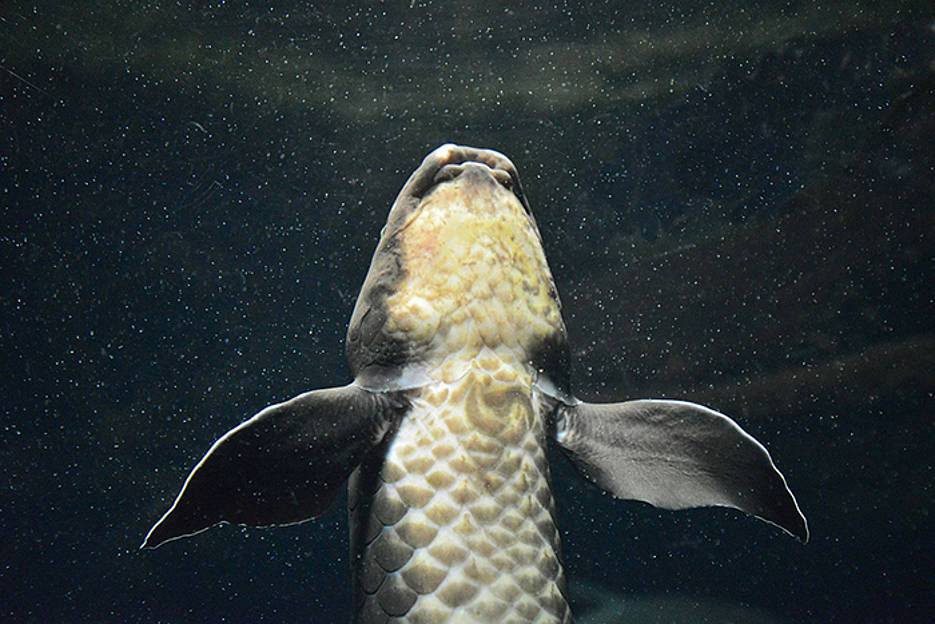Jayme Blaschke | February 3, 2021

New research conducted in part at the Xiphophorus Genetic Stock Center at Texas State University has for the first time decoded the huge genome of the endangered Australian lungfish using the latest DNA sequencing technology.
The international research team includes Texas State's Manfred Schartl and Kang Du of the Xiphophorus Genetic Stock Center. The study, "Giant lungfish genome elucidates the conquest of land by vertebrates," is published the journal Nature (www.nature.com/articles/s41586-021-03198-8).
Fish first evolved the ability to survive on land approximately 380 million years ago. The air-breathing Australian lungfish is one of the few remaining relatives of these first "land fish." The lungfish has changed very little over that span and is therefore referred to as a "living fossil." The analysis of its genome gives new insights into the evolutionary innovations that made it possible for fish to colonize dry land.
The lungfish genome is the largest animal genome that has ever been deciphered. At 43 billion base pairs, it is 14 times larger than that of humans. This exceeds the genome of the axolotl, the previous record holder in the animal kingdom, by 30%. Surprisingly, the lungfish does not have significantly more genes than other vertebrates, but it has significantly more mobile genetic elements, so-called transposons.
"These elements can be seen as a kind of computer virus. They multiply by themselves but have no function," Schartl said. "Scientists wonder why the lungfish's 'genetic hard drive' has not long since crashed in view of the high number of transposons."
The Australian lungfish (Neoceratodus forsteri) lives in slow-moving rivers and stagnant waters. Because of its newt-like body, it was wrongly classified as an amphibian in the 19th century. Today it is understood that the lungfish belongs to an archaic group of aquatic organisms from which all terrestrial vertebrates evolved. The fleshy fins of the lungfish have an anatomical bone structure that is recognizable to be similar to that in the human limbs. This allows the Australian lungfish to move around in the water and on land like salamanders. They also have lungs, requiring them to breathe air in order not to drown.
Genome analysis reveals striking similarities between the Australian lungfish and terrestrial vertebrates. Genes associated with the development of lungs, articulated limbs and the detection of odors in the air are much more similar to amphibians and other terrestrial vertebrates than to their fish relatives. The researchers also showed that the lungfish is more closely related to terrestrial vertebrates than the primitive coelacanth fish, previously thought to hold this position. The study indicates lungfish split off from the coelacanths 420 million years ago and formed a line that leads to the land animals.
Share this article
For more information, contact University Communications:Jayme Blaschke, 512-245-2555 Sandy Pantlik, 512-245-2922 |
